

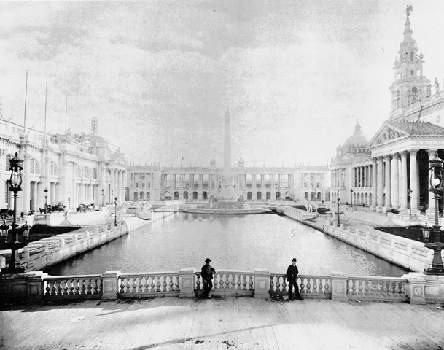 |
|
For Alan Trachtenberg, the 1893 World's Fair in Chicago is representative
of the
creation of what I will call the public sphere in the Gilded Age
(1870-1898). The Fair
marks the creation of an attitude toward environment as something which can be manipulated and structured in such a way as to affect and improve the people within it, to create a
public. The idea was that by beautifying and organizing the appearances of the public sphere, one could create a better, happier people. By changing the face of the city, one could end
the problems of crime and poverty within it. A term for this attitude and its practices of beautification and organization is "social engineering". Many of the buildings and spaces we take for granted today, such as department stores, movie theaters, and Central Park were projects of social engineering.
Part of the World's Fair was a synthetic, temporary city, called White City, which was created solely for the Fair. At the center of White City was the Court of Honor with buildings of a neoclassical architectural style. Within the building of White City were scientific and commercial exhibits. According to Trachtenberg, the overall message of White City, and the entire Fair for that matter, was the virtue of the unification of science, business, and government, with beauty and culture. This unification was the very form of progress.1 The fair presented a vision of national unity and stability for the future of America as the leader of progress through the reign of culture. |
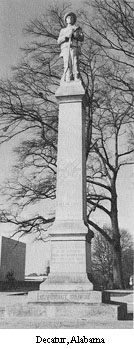 |
While in 1893 Chicago celebrated this monument to an idealized vision of the future, the
South was in the midst of an intense movement to memorialize the past
that started at the end of the Civil War and lasted into the first two decades
of the twentieth-century. The Gilded Age was a
period of intense memorialization for both North and South. Both regions made unprecedented
efforts to pay tribute to the Civil War conflict, its soldiers and heroes. In 1914, the Confederate
Veteran magazine reported that there were over a thousand monuments in the
South.2
Ironically, monuments of both North and South are virtually indistinguishable in appearance. Both regions celebrated heroes through equestrian statues, the common soldier through the solitary soldier sculpture, and commemorated the dead through cemetery obelisks. Yet, the meaning of these monuments was as different for these two regions as the meaning of the war itself had been. It is the context surrounding the monuments which give them much of their meaning and is the means by which we may recognize and evaluate the unique character and meaning of the Confederate monument in distinction from those of the North, however similar they may appear.
|
I am interested, in this project, in the extravagantly large number of simple monuments to the confederate
dead or common soldier scattered across the South. For the most part, these are solitary soldier
statues, what Professor Widener calls the local monument:
Perhaps most familiar to us...is the local Confederate monument. These bronze and stone reminders of the great conflict between the states are found on virtually every courthouse lawn throughout the South.3It is my contention that the monuments themselves, as well as the large number of them, hold important meaning about both the South's response to the Civil War and reconstruction, and the creation, use, and evolution of the public sphere in the Gilded Age. |
|
| In order to restore to these monuments their individual histories, I have relied primarily on dedication programs. These programs were usually created by the same local, volunteer organizations that were responsible for the monuments themselves. Such organizations were usually local chapters of Southern organizations such as the United Daughters of the Confederacy and the United Confederate Veterans. These programs typically include a drawing (or occasionally a photograph) and description of the monument, an account of the dedication activities including parades and orations, the full texts of orations, addresses and poems given by speakers, and a brief explanation of how the monument came to be, who came up with the idea of the monument, what it was intended to mean, how it was paid for, and who designed it. |
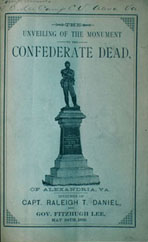 |
These programs are rich artifacts. They not only bring the dedications to life, but evince an awareness of the time and context-specific nature of a monument's meaning on the part of those who produced the programs. They also evince a corresponding desire to perpetuate and broadcast the meaning created by a monument's history and dedication through the printed word. In fact, the programs are, themselves, monuments to the monuments and dedications. Their covers, like gravestone inscriptions, record the name and location of the monument, the date of its dedication, and other identifying features of information. The program commemorates both the birth and death of the monument as created by its dedication. It also commemorates the second birth of the monument as created and recreated throughout time as the course of events provide new and different contexts and audiences. The monument is, as the Confederate soldier has been characterized, both old and young. Old because created in the past, but forever young as well, because it is continually recreated by its context. |
|
Programs also pay tribute to the volunteer committees and organizations formed for the
purpose of erecting and dedicating the monuments. Like the World's Fair, the monuments and
their dedications were the responsibility of an incorporated group. However, the World's
Columbian Commission was made up of a relatively small group of culturally, economically, and
politically elite chosen from a national venue. The Confederate monuments were local enterprises. The corporations that sponsored them were often committees or
chapters of organizations such as the United Daughters of the Confederacy or the United
Confederate Veterans. On occasion, the corporations were created for the sole purpose of
erecting a monument. And sometimes the monument was the vision of an
individual such as Colonel
Smith who, on his march home from Appomattox at the end of the war, envisioned a monument to
the Confederate dead, the "many dear old boys left behind...their bones lying upon a hundred
battlefields."4 Similarly, the Confederate Monument at Luray,
Virginia was conceived of and
created by the sculptor, Mr. Herbert Barabee, upon seeing 500 Northern monuments and only one
Southern monument at Gettysburg. Thus, the Confederate monuments could be responses to the personal thoughts, feelings, and inspiration or needs of an individual. The formation of a committee, of local community members, around these individuals suggests that such feelings and needs were shared by the local public. Because of the great number of these committees, and because of their local nature, the monuments, taken as a whole, reflected a larger percentage of the public than the World's Fair.
The programs list (sometimes laboriously) the different offices within these committees and the names of officers and members. Both individually and collectively, the programs are veritable celebrations of incorporation through their attention to these ordered and structured collectives and their members. The attention to these voluntary groups is also a celebration of the loyalty of the average Southern citizen to the Lost Cause, Old South, and Confederate dead. That so many members of these organizations would be named also reflects the local nature of the monuments, their dedications and audiences. It suggests that these names would be recognized by the public audience of the dedications and owners of the programs. Indeed, handwritten names and notes found on the covers and inside covers of the programs indicate that they were owned by private individuals and often received as a gift from another private individual. The programs celebrate local Southern community as much as the monument, the war, or the Confederate dead. The programs brought as much of the dedications as possible home to the private individual. The use of poems, addresses, song lyrics, drawings, occasional photographs, and descriptions of the monument, dedication, and sponsoring organizations mirrors the richness and diversity of ceremonies at a given dedication. The work of the programs, like that of the monuments, occured on a personal level, by immersing the individual in an elaborate collective experience of ceremony. We shall see how this took place at the dedications as well as through the programs which reflected them so well.
The Lost Cause and New South MovementsThe programs, the monuments, their dedication activities, and speeches fall within a tradition identified by historians of the post-Civil War South which they have called the Lost Cause movement. Charles Wilson writes in Baptized in Blood: Fearing that crushing defeat might eradicate the identity forged in war, Southerners reasserted that identity with a vengeance...the Lost Cause religion was a revivalistic movement, aiming, as Wallace has said, "to restore a golden age believed to have existed in the society's past."5 |
| That golden age was the age of chivalry, of an Old South of gentlemen and ladies. This was the South supported by the institution of slavery. And it was this South which, as the Southerners saw it, was defended in the Civil War. The Lost Cause movement celebrated this Old South through sermons, ceremonies such as monument dedications, veterans' reunions, and special holidays and days of prayer and fasting.6 Wilson contends that this uniquely Southern cultural identity replaced the separate political nation of the South as its Cause. The Lost Cause movement insisted on God's ordination of the Confederate cause. Proponents of the Lost Cause movement thus sought to show that the sacrifices of the South had not been in vain but protected that Southern culture of chivalry and gentility, the survival of which was evinced by the Lost Cause movement itself.7 | 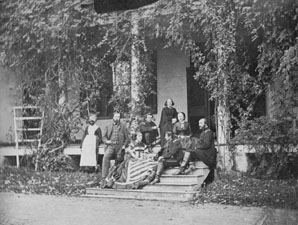 |
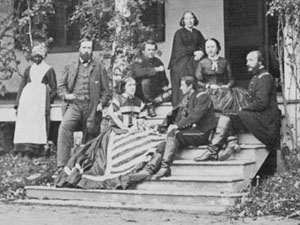 |
As Lost Cause projects and ceremonies, monuments and their dedications provided refuge from a second tradition of the post-Civil War South called the New South movement. According to Paul Gaston, author of The New South Creed, the New South movement was aimed at "industrial progress, diversified agriculture, and cooperation with the North".8 Such changes would mean a complete overhaul of Southern civilization. This is evinced in historian, John Ezell's, description of the importance of the one staple farming of cotton, corn, and tobacco, which such industrialization and diversified agriculture were to replace: |
So important was the crop that the life of the whole area was characterized by activities and attitudes resulting from its cultivation. Social life and institutions, such as schools, churches, and the like, were all geared to the cycle of planting, cultivating, harvesting, and sale.9Thus, monuments and their dedications provided refuge from the complete overhaul of the South implied in the Southern movement of the New South and Northern plans of Reconstruction. |
|
|
|
|
|
|
|
|
|
|